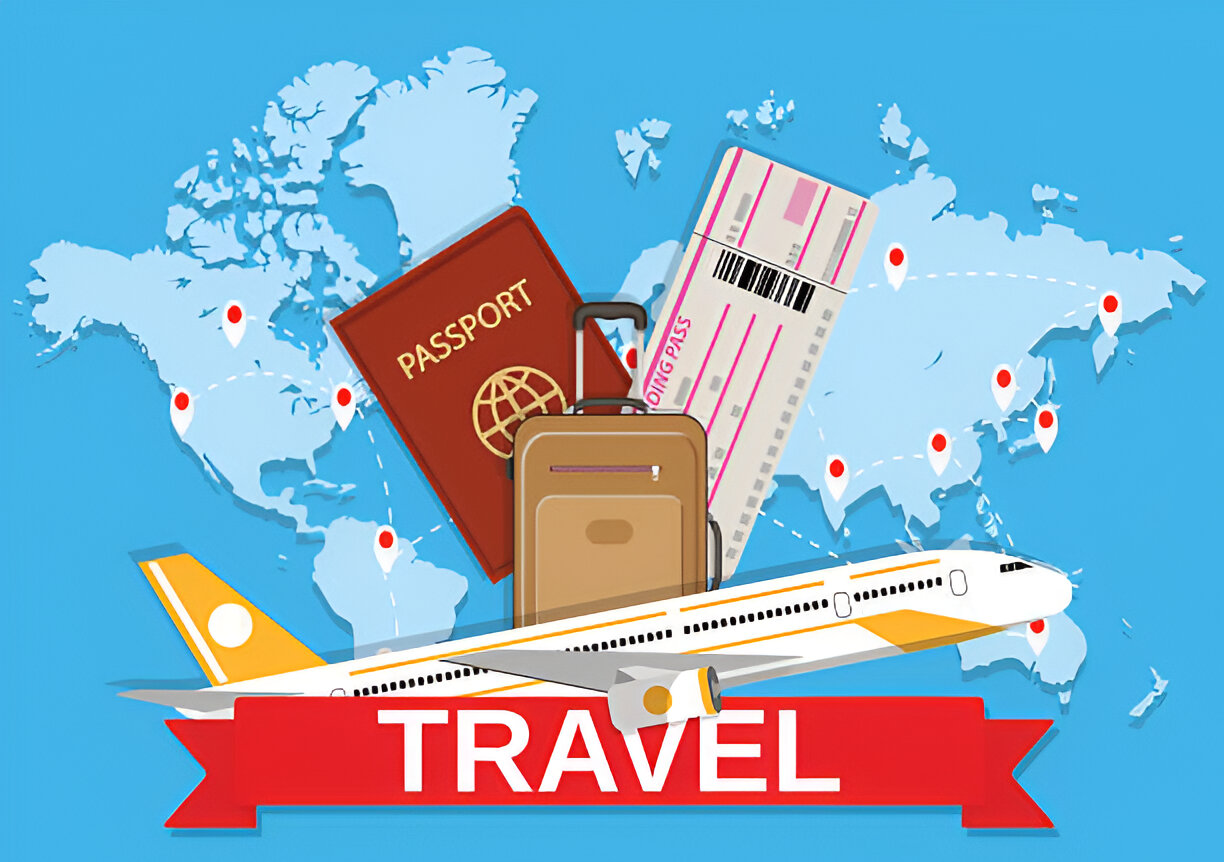“Discover the World: How Social Media Transforms Travel Trends and Inspires Adventure.”
Introduction
Social media has become a powerful force in shaping travel trends, influencing how individuals plan, experience, and share their journeys. Platforms like Instagram, Facebook, and TikTok provide travelers with a wealth of visual inspiration and real-time information, allowing them to discover new destinations and experiences. User-generated content, including photos, videos, and reviews, plays a crucial role in shaping perceptions and preferences, often driving the popularity of certain locations and activities. Additionally, social media facilitates the sharing of travel experiences, creating a sense of community among travelers and encouraging the exploration of off-the-beaten-path destinations. As a result, social media not only impacts individual travel choices but also shapes broader industry trends, making it an essential element in the modern travel landscape.
Influencer Impact on Travel Choices
In recent years, the influence of social media on travel choices has become increasingly pronounced, with influencers playing a pivotal role in shaping the preferences and behaviors of travelers. As platforms such as Instagram, TikTok, and YouTube have gained popularity, they have transformed the way individuals discover and engage with travel destinations. Influencers, often characterized by their ability to curate visually appealing content and share personal experiences, have emerged as key figures in this dynamic landscape. Their impact extends beyond mere recommendations; they actively shape perceptions of destinations, experiences, and even travel-related products.
One of the most significant ways influencers affect travel choices is through the power of visual storytelling. By sharing stunning photographs and engaging videos, they create an aspirational narrative that resonates with their followers. This visual appeal not only captures attention but also evokes emotions, prompting viewers to envision themselves in the depicted locations. Consequently, destinations that are featured prominently by influencers often experience a surge in interest, leading to increased tourism. For instance, a single post showcasing a picturesque beach or a vibrant cityscape can inspire thousands of followers to consider that location for their next vacation.
Moreover, influencers often provide a sense of authenticity that traditional advertising lacks. Their followers tend to perceive them as relatable figures rather than distant celebrities or faceless brands. This relatability fosters trust, making followers more likely to act on the recommendations provided. When an influencer shares their personal experiences, including both the highlights and challenges of a trip, it creates a more nuanced understanding of the destination. This authenticity can significantly sway travel decisions, as potential travelers seek genuine insights rather than polished marketing messages.
In addition to visual storytelling and authenticity, influencers also leverage their platforms to promote specific travel products and services. From luggage brands to travel insurance, their endorsements can significantly impact consumer behavior. Followers often look to influencers for guidance on what to pack, where to stay, and which activities to prioritize. As a result, influencers can drive sales for brands that align with their travel experiences, creating a symbiotic relationship between content creators and the travel industry. This relationship not only benefits influencers through sponsorships and partnerships but also provides brands with a direct line to engaged audiences.
Furthermore, the rise of micro-influencers—individuals with smaller but highly engaged followings—has added another layer to the influencer landscape. These micro-influencers often focus on niche travel experiences, such as eco-tourism or adventure travel, allowing them to connect with specific audiences. Their targeted approach can lead to more meaningful engagement, as followers feel a stronger connection to influencers who share their interests. This trend highlights the importance of authenticity and community in shaping travel choices, as travelers increasingly seek out experiences that align with their values and preferences.
In conclusion, the role of social media influencers in shaping travel trends cannot be overstated. Through their ability to craft compelling narratives, foster authenticity, and promote products, they have become integral to the decision-making process for many travelers. As social media continues to evolve, the influence of these content creators is likely to grow, further transforming the travel landscape. Consequently, understanding the dynamics of influencer impact is essential for both travelers seeking inspiration and brands aiming to connect with their target audiences.
Social Media Platforms as Travel Inspiration
In recent years, social media platforms have emerged as powerful tools for shaping travel trends and influencing the choices of millions of travelers worldwide. As individuals increasingly turn to these digital spaces for inspiration, the impact of visually-driven content cannot be overstated. Platforms such as Instagram, Pinterest, and TikTok have transformed the way people discover destinations, plan their trips, and share their experiences. This shift has not only altered the landscape of travel marketing but has also democratized the travel experience, allowing users to curate their journeys based on the insights and recommendations of fellow travelers.
One of the most significant ways social media serves as a source of travel inspiration is through the proliferation of visually appealing content. High-quality images and videos showcasing breathtaking landscapes, vibrant cultures, and unique experiences captivate audiences and evoke a sense of wanderlust. As users scroll through their feeds, they are often drawn to stunning visuals that prompt them to consider destinations they may not have previously contemplated. This phenomenon is particularly evident on platforms like Instagram, where the use of hashtags and geotags allows users to explore specific locations and discover hidden gems that may not be featured in traditional travel guides.
Moreover, the rise of influencer culture has further amplified the role of social media in shaping travel trends. Influencers, who often have large followings and a strong connection with their audience, share their travel experiences in a relatable manner. Their authentic storytelling and personal recommendations resonate with followers, making them more likely to consider similar destinations. This shift from traditional advertising to influencer marketing has created a new paradigm in which travelers seek out experiences that align with the lifestyles portrayed by their favorite influencers. Consequently, destinations that are frequently featured by influencers often see a surge in interest, leading to increased tourism and economic benefits for those areas.
In addition to influencers, user-generated content plays a crucial role in shaping travel trends. Travelers are now empowered to share their experiences in real-time, providing a wealth of information and inspiration for others. This organic sharing of content fosters a sense of community among travelers, as individuals exchange tips, recommendations, and personal stories. As a result, social media platforms have become invaluable resources for those seeking authentic travel experiences. The ability to access firsthand accounts and reviews from fellow travelers allows individuals to make informed decisions about their travel plans, ultimately enhancing their overall experience.
Furthermore, social media platforms facilitate the discovery of niche travel trends that may not be widely recognized. For instance, the rise of eco-tourism, adventure travel, and wellness retreats can often be traced back to viral content shared on social media. As users showcase their unique experiences, they inspire others to explore alternative forms of travel that prioritize sustainability, adventure, or personal well-being. This trend not only diversifies the travel landscape but also encourages responsible tourism practices, as travelers become more conscious of their impact on the environment and local communities.
In conclusion, social media platforms have fundamentally transformed the way individuals seek travel inspiration. Through visually captivating content, the influence of social media personalities, and the sharing of user-generated experiences, these platforms have created a dynamic environment that shapes travel trends and preferences. As travelers increasingly rely on social media for inspiration, the implications for the travel industry are profound, highlighting the need for businesses to adapt to this evolving landscape. Ultimately, the role of social media in shaping travel trends underscores the power of community and connection in the modern travel experience.
The Rise of User-Generated Content in Travel Marketing
In recent years, the landscape of travel marketing has undergone a significant transformation, largely driven by the rise of user-generated content (UGC). This shift has not only altered how travel brands engage with their audiences but has also redefined the way potential travelers perceive and plan their journeys. As social media platforms continue to proliferate, the influence of UGC has become increasingly pronounced, offering a more authentic and relatable perspective on travel experiences.
User-generated content encompasses a wide array of materials, including photographs, videos, reviews, and blog posts created by travelers themselves. Unlike traditional marketing strategies that often rely on polished advertisements and professional imagery, UGC provides a genuine glimpse into the realities of travel. This authenticity resonates with consumers, who are increasingly skeptical of conventional marketing tactics. As a result, travel brands are now prioritizing UGC in their marketing efforts, recognizing its power to foster trust and credibility among potential customers.
Moreover, the proliferation of social media platforms has facilitated the sharing of travel experiences on an unprecedented scale. Travelers can now instantly document their adventures and share them with a global audience, creating a vast repository of content that influences the decisions of others. Platforms such as Instagram, Facebook, and TikTok have become essential tools for travelers seeking inspiration and information. As users scroll through their feeds, they are often drawn to visually appealing images and engaging stories shared by fellow travelers, which can significantly impact their travel choices.
In addition to inspiring wanderlust, user-generated content also plays a crucial role in shaping travel trends. For instance, viral posts showcasing unique destinations or experiences can lead to sudden surges in interest, prompting travelers to explore places that may have previously gone unnoticed. This phenomenon is particularly evident in the rise of “Instagrammable” locations, where the aesthetic appeal of a destination is amplified by the sheer volume of user-generated content shared online. Consequently, travel brands are increasingly leveraging this trend by encouraging customers to share their experiences, often through branded hashtags or contests, thereby amplifying their reach and visibility.
Furthermore, the impact of UGC extends beyond mere inspiration; it also serves as a valuable source of information for travelers. Reviews and recommendations from fellow travelers can provide insights that traditional marketing materials may overlook. For example, a traveler may share tips on the best local eateries or hidden gems that are not typically highlighted in promotional content. This grassroots approach to travel marketing empowers consumers to make informed decisions based on real experiences, ultimately enhancing their overall travel experience.
As the role of user-generated content continues to evolve, travel brands must adapt their strategies to harness its potential fully. This involves not only curating and showcasing UGC but also actively engaging with their audience. By fostering a sense of community and encouraging dialogue, brands can create a more immersive and interactive experience for their customers. In doing so, they not only enhance brand loyalty but also position themselves as trusted sources of information in an increasingly crowded marketplace.
In conclusion, the rise of user-generated content has fundamentally reshaped travel marketing, offering a more authentic and relatable approach to engaging with consumers. As travelers increasingly turn to social media for inspiration and information, the importance of UGC in shaping travel trends cannot be overstated. By embracing this shift, travel brands can effectively connect with their audiences, foster trust, and ultimately drive engagement in an ever-evolving digital landscape.
Q&A
1. **Question:** How does social media influence travel destination choices?
**Answer:** Social media platforms showcase user-generated content, such as photos and reviews, which can inspire potential travelers to choose specific destinations based on visual appeal and personal recommendations.
2. **Question:** What role do influencers play in shaping travel trends on social media?
**Answer:** Influencers often have large followings and can sway their audience’s travel decisions by sharing curated experiences, promoting destinations, and providing travel tips, thereby creating trends that followers may want to emulate.
3. **Question:** How does social media affect the timing of travel?
**Answer:** Social media can create a sense of urgency and FOMO (fear of missing out) through trending destinations and seasonal promotions, leading travelers to plan trips around popular events or viral locations.
Conclusion
Social media plays a pivotal role in shaping travel trends by influencing consumer behavior, facilitating the discovery of new destinations, and enabling the sharing of experiences. Platforms like Instagram, Facebook, and TikTok serve as visual and interactive tools that inspire wanderlust, promote unique travel experiences, and create communities around shared interests. As travelers increasingly rely on social media for recommendations and inspiration, it has become a powerful driver of tourism, impacting destination popularity and travel planning. Ultimately, social media not only reflects current travel trends but actively shapes them, making it an essential component of the modern travel landscape.



